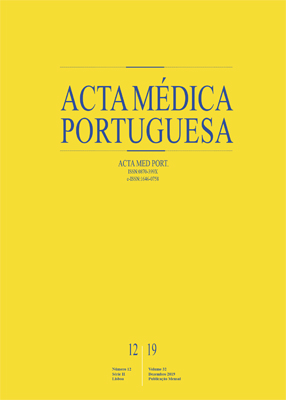Passive Transfer of Hepatitis B Antibodies through Intravenous Immunoglobulin in a Neonate
DOI:
https://doi.org/10.20344/amp.9792Keywords:
Cardiomyopathy, Dilated, Hepatitis B Antibodies, Immunoglobulins, Intravenous/adverse effects, Infant, NewbornAbstract
Passive transfer of antibodies secondary to intravenous immunoglobulin infusion is a rare but important side effect that can lead to the wrong diagnosis and therapeutic decisions. It has never been reported in a newborn. A male newborn, vaccinated against hepatitis B and diagnosed with dilated cardiomyopathy, presented positive hepatitis B core antibodies at 12 days of life. Exclusion of hepatitis B infection was mandatory as it would be a contraindication to heart transplant. Passive transfer of antibodies was confirmed at 44 days of age, after seroreversion of hepatitis B core antibodies. Passive transfer of antibodies after intravenous immunoglobulin infusion can lead to a misleading diagnosis if not recognized. In our patient it could have been especially harmful had it prevented heart transplant. Screening for hepatitis B should be performed at least 1 month after intravenous immunoglobulin infusion.
Downloads
Downloads
Published
How to Cite
Issue
Section
License
All the articles published in the AMP are open access and comply with the requirements of funding agencies or academic institutions. The AMP is governed by the terms of the Creative Commons ‘Attribution – Non-Commercial Use - (CC-BY-NC)’ license, regarding the use by third parties.
It is the author’s responsibility to obtain approval for the reproduction of figures, tables, etc. from other publications.
Upon acceptance of an article for publication, the authors will be asked to complete the ICMJE “Copyright Liability and Copyright Sharing Statement “(http://www.actamedicaportuguesa.com/info/AMP-NormasPublicacao.pdf) and the “Declaration of Potential Conflicts of Interest” (http:// www.icmje.org/conflicts-of-interest). An e-mail will be sent to the corresponding author to acknowledge receipt of the manuscript.
After publication, the authors are authorised to make their articles available in repositories of their institutions of origin, as long as they always mention where they were published and according to the Creative Commons license.









